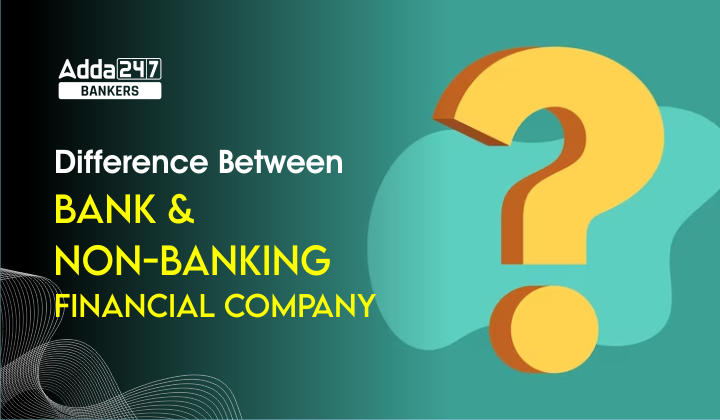Table of Contents
Banking And Non-Banking Financial Institutions
You must have heard of the two major types of financial Institutions and they are the banking one and the non-banking one. If you are aspiring to crack any competitive banking exams, then you must be well-fetched about the difference between these banking and non-banking financial institutions. This article will provide you a well-versed knowledge of banking and non-banking companies along with their distinctive nature.
In simple terms, banking institutions are consist of savings, commercial banks, loan associations, credit unions and more. On the other hand non-banking financial institutions involve pension funds, insurance companies, hedge funds etc. So, how these two groups can be differentiated. Here, we have discussed a detailed notions about each banking institutions and listed there differences.
What Are Banking financial Institutions?
Banking Financial Companies are mainly responsible for taking deposits of the public or individuals and process with the making of loan. Along with this banking institutions also handles foreign exchange, investment banking, safe deposits and more. These type of companies are highly channelized by governments as they are responsible for protecting customers from frauds and assure them of safe and secured banking system.
Types Of Banking Financial Institutions
Further the Banking Financial Institutions have been segmented into two portions and they are depository and non depository one.
- Depository companies mainly involve savings and loans, banks, mutual saving and credit unions.
- Non-depository companies involves insurance companies, finance companies and pension funds for the consumers.
What Are Non-Banking Financial Institutions?
These type of companies are responsible for delivering financial services like insurance, lending, investment banking and more. These type of banks are generally not controlled like the banks. Non-banking financial companies have different set of protocols to follow as per the institution’s convenience.
Types Of NBFCs
The types of non-banking financial companies have been segmented into various parts as we have listed below:
- Investment Banks: These type of banks helps any institution to raise money by selling or issuing securities.
- Insurance companies: These type of companies are responsible to sell different type of policies to businesses or individuals.
- Mutual Funds: These type of funding drags financial help from investors and invest it safely as bonds or stocks to double up the payment.
- Pension Funds: Through this type workers or the employees will get retirement income.
- Hedge Funds: These type of funds are said to b private investments through partnerships.
- Venture capital institutions: These type of companies value investing in budding or start-up organizations that has good potential to grow in future.
How Do NBFCs Differ Form Banks?
Here we have listed out some crucial points through which you can easily analyze how banking and non-banking financial institutions differ from each other.
| Difference Between Banking and Non-banking Financial Institutions | ||
| Source of difference | Banks | NBFCs |
| Service Types | Banks will deliver services related to guarantees, loan advancement, credit card, cheque payments and more | NBFCs deliver services like plans, stocks, investments, insurance facilities, mutual funds and more. |
| Regulations | Banks are legally licensed as they are processed by the Government. | NBFCs are generally not authorized but are licensed financial institutions. |
| Deposit and functionalities | One of the major role of banks involves accepting deposits from the consumers and delivering loans. | NBFCs are mainly responsible for securing deposits for future purpose. |
| Payment and Settlement | Banks are involved in the process of settlement and payment cycle. | NBFCs are not involved in any kind of payment and settlement acts. |
| Demand or acceptance of funds | Banks generally accepts deposits from the consumers and repay it on demand of the owner. | NBFCs can force for demand deposits. |
Conclusion
In conclusion, we must accept that banking and non-banking financial institutions plays equal crucial role in the banking sector. However, their working process and functioning capabilities differ from each other. It is essential for a banking exam aspirant to grasp the values of both type of institutions and their processing differences.




 Financial Awareness for Bank Exams 2025,...
Financial Awareness for Bank Exams 2025,...
 Zero Discrimination Day is Observed Ever...
Zero Discrimination Day is Observed Ever...
 World Day of Social Justice 2025, Theme,...
World Day of Social Justice 2025, Theme,...


